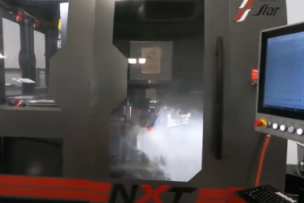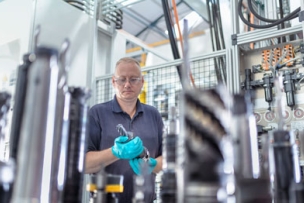Removing rough surfaces also helps to eliminate the stress risers that can lead to cracking, an important consideration for load-bearing parts.
Most 3D-printed parts require temporary supports during the build process. These scaffold-like structures help prevent the layers and sections from curling upward or sagging downward (depending on the AM process), and they keep heat-induced warpage to a minimum. Once the part is complete, these support structures must be removed, usually by mechanical or abrasive means—as you will see, though, sometimes a warm bath will do.
Read more: Additive Manufacturing: 5 Things You Need to Know About 3D Printing
Last, but certainly not least, is part accuracy. Regardless of its immense design freedom and the opportunities it presents for strong yet lightweight parts, 3D printing is not yet very accurate, at least by conventional manufacturing standards. There’s the surface roughness already described to contend with, as well as flatness, roundness and all the rest. As a result, holes must be reamed or bored, journals turned true, mounting surfaces milled flat. This is why many 3D-printed parts—and certainly those made of metal—take a trip to the machine shop after printing.
Strategies for 3D Printing Post-Processing Success
Fortunately, a number of equipment companies—as well as the 3D printer manufacturers themselves—are taking steps to address these AM shortcomings.
This work will become even more important as production quantities increase and additive evolves into a mainstream process. Although secondary processes won’t ever go away (a fact with which subtractive manufacturers are also aware), these companies will at least make life easier for those who print parts for a living.
Bernie Kerschbaum is the CEO of one such company: Rosler Metal Finishing USA, which is based in Battle Creek, Michigan. Kerschbaum suggests that product designers and manufacturers alike should do their homework when it comes to the post-processing of 3D-printed parts, preferably long before the printing begins.
“No one offers a one-size-fits-all finishing technology, and a lot of times it’s not a single process, either,” Kerschbaum says.
He offers the example of a 3D-printed prototype of a shampoo bottle he assisted a large consumer products customer with some years ago, one that required extensive vibratory finishing to achieve the same look and feel as its plastic injection-molded production counterpart. Other parts call for wet or dry blasting to level rough surfaces, while some require multiple finishing operations to reach the desired smoothness. Coloring with dye or paint is also quite common, as is polishing, surface grinding and the application of protective coatings.
Read more: Additive Manufacturing Begins to Mature Beyond Desktop 3D Printing







Talk to Us!
Leave a reply
Your email address will not be published. Required fields are marked *